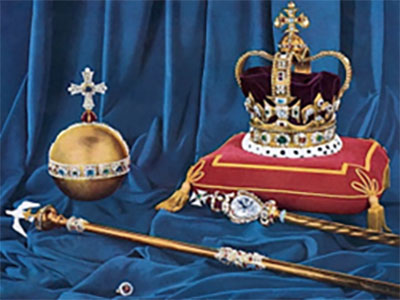Life on the West Island - A right royal conspiracy
06 March 2024

Last week, Life on the West Island attended a very revealing symposium at Western Sydney University (WSU) on the fallout from the successful High Court challenge against the National Archives, which resulted in the “unsealing” of the Palace Letters between Buckingham Palace and Governor-General Sir John Kerr.
The more than 200 of those letters revealed a long chain of plotting between Kerr, Prince Charles and the Queen, amounting to a secret conspiracy to dismiss then West Island Prime Minister Gough Whitlam. The Australian Constitution requires the Governor-General to act on the advice of his Prime Minister, but the plot involved Kerr not seeking advice from Whitlam, but instead getting his marching orders direct from Buckingham Palace. In the letters, Kerr tells the Queen that he was frightened that if Whitlam got wind of this nefarious conspiracy, he would advise the Queen to remove his commission as Governor-General, which she would be obliged to do.
The letters from Kerr are dripping with obsequious and flattering comments about the Queen and dark hints that Whitlam was a closet republican. In return, the Palace sanctioned the immediate sacking of the Prime Minister, ostensibly because the Senate was blocking passage of the federal budget. However, on 10th November 1975, two Liberal Senators agreed to vote with the government, ensuring that the budget would pass. Alarmed that this would undermine the plot, Kerr summoned Whitlam to Government House the next morning before Parliament convened, and handed him his letter of immediate dismissal.
Intrigued by these unprecedented events, respected historian Professor Jenny Hocking applied in 2016 under freedom of information legislation to view the large collection of correspondence between Kerr and the Palace held by the archives, but was denied access on the grounds that the correspondence was “private.” As all of the documentation consisted of official government records, she was flabbergasted by that definition and attempted to negotiate with the head of archives, to no avail. Over several years, she made unsuccessful applications through the courts to have her freedom of information request actioned, but a final appeal to the High Court resulted in a ruling to release the letters, as reported in The Guardian on 29 May 2020:
The high court on today ruled that the Commonwealth was wrong to withhold the so-called “palace letters”, a series of more than 200 exchanges between the Queen, her private secretary and Kerr, the then-governor general, in the lead-up to the 1975 dismissal of Whitlam, the then-Australian prime minister. Hocking is now calling on the National Archives of Australia to immediately release the 211 letters, saying the public deserves to know the full history of the greatest political and constitutional crisis in Australia’s history.
The archives quibbled and delayed but eventually Prof Hocking was granted access to the unsealed letters around six months later. She reported her alarming findings in a popular book and a television documentary. Hocking revealed that if the court action had failed, she would probably have been bankrupted by being ordered to pay the Commonwealth’s legal costs of more than a million dollars. However, she had established an online funding appeal which had a substantial balance, so she contacted all of the donors and offered their money back or alternatively to establish a fund to conduct further research into official records. A side effect of the High Court decision was that the correspondence between eight subsequent Governors-General and the Queen was also “unsealed” and so made available to researchers. With the surplus donations, Professor Hocking set up an endowment at the Whitlam Institute at WSU to employ qualified researchers to study the additional correspondence and the effects it might have had on West Island public policy.
Last week’s seminar involved addresses and discussion with Prof Hocking and the Palace Letters Fellows, together with prominent historians including Professors Frank Bongiorno and Neville Yeomans. They found that while subsequent contacts between Governors-General and the Queen were less controversial, it was clear that the Palace sought to influence the conduct and outcome of the republic referendum and to time royal visits in ways to provide tacit support to conservative governments.
The overall conclusion of the symposium was that it was misguided to assume that the monarch was a figurehead who was the West Island head of state in name only. Prince Charles was a key player in the dismissal of the elected government in 1975, despite it still holding a majority in parliament. He is now officially King of Australia and if he holds to his previously stated beliefs, could dismiss a democratically elected government and either force a snap election or appoint a new unelected Prime Minister.
The events of 1975 revealed in the Palace Letters show that both the monarch and the Governor-General were prepared to ignore the provisions of the Constitution and associated conventions, without reference to the elected government or the West Island people. The further research at WSU on later periods confirms that this risk is still present. Perhaps it is time that we avoided the possibility of another right royal conspiracy, and exercised our democratic right to choose our head of state by popular election, rather than through an accident of birth in Britain?